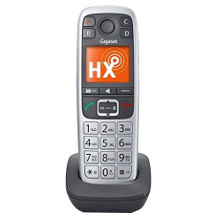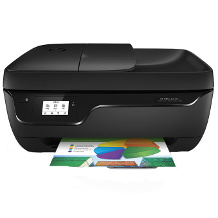Cordless home phone purchasing advice: how to choose the right product
- Aspetti rilevanti
- Cordless phones are the most popular devices for the fixed network.
- With DECT-compatible Internet routers, users benefit from a variety of additional functions.
- Certain device standards ensure that devices from different manufacturers are compatible with each other.
- For cordless telephones without their own base station, a DECT-compatible router is necessary.
- VoIP technology will replace the ISDN standard by 2022 at the latest.
Uses and advantages of a landline telephone
A landline telephone is a telephone that is wired to the telephone connection of the home. It only works in the vicinity of the premises where this connection is located. In the past, telephones were connected directly to the so-called TAE socket in the wall. Nowadays, there is a slot for the cable of a landline telephone on every commercially available internet router. Cordless telephones that are not wired are also called landline telephones because the base station is connected to the landline.
Is it cheaper to use a landline phone than a mobile phone?
While wired landline telephones are still largely the standard in many companies, mobile phones have now overtaken landline telephones for private calls. According to market observers, the times when users resorted to the fixed-line phone for cost reasons are definitely over. After all, there are now mobile phone contracts that offer a flat rate to the fixed network and to all mobile phone networks for as little as 10 euros or less. The reason why the number of fixed-network connections with these offers has not dropped rapidly is the spread of internet connections. In practically all broadband internet connections, the fixed network is already integrated. In comparison, surfing the internet via mobile phone tariffs with the same data volume is still significantly more expensive.
Landline telephones guarantee a more stable connection
If one’s own connection offers the option for a landline telephone, it is also used in most cases. Compared to mobile phones, landline phones have the advantage of a more stable connection that is independent of network quality. Even though mobile network coverage has become better and better in recent years and is still being expanded, this is still an argument for many.
Many opponents of mobile phones also argue that the devices emit radiation. It is true that there are no objectively proven findings on this. However, some health experts advise people to do without mobile phones or smartphones for longer calls.

How alarming is the radiation exposure of cordless phones?
Portable landline telephones also emit in the high-frequency electromagnetic range, but not nearly as strongly as mobile phones. In addition, tests have shown that most cordless phones automatically reduce their radiation emission depending on the quality of the connection. The only way to completely avoid radiation when telephoning is to choose a wired landline telephone. In this way, the user is literally playing it safe. In the relevant test reports, the radiation emitted by cordless phones is always a criterion that, depending on the magazine, is included to a greater or lesser extent in the final score. Practically all cordless phones have an eco mode that reduces emissions. However, this may also reduce the range of the device or the voice quality.
Overall, handling is often a plus point for landline phones
A few years ago, the transmission quality was also a pro-argument for a landline phone. However, due to the constantly improving quality of mobile networks and mobile phones, this is now only a strong selling point in a few areas with poor network coverage. What still speaks for many people in favour of the landline phone, however, is the better ergonomics. Especially during long phone calls, a handset is usually more comfortable to hold than a mobile phone or smartphone. Senior citizens in particular prefer telephones with large buttons and an emergency call button, as offered by many cordless landline telephones. This can be used to call for medical help quickly in an emergency. Special telephones are equipped with a louder receiver and are thus hearing aid compatible.
Pro points
- Stable connection quality
- Simultaneous accessibility for all persons in a household
- Favourable tariffs
- No dead spots
Drawbacks
- No accessibility on the move
- Less interesting for mobile phone and smartphone fans
Different model variants
The various versions of landline telephones can be divided into wired and wireless devices. In the case of wired telephones, three different types are used depending on the type of connection: VoIP, ISDN and analogue telephones. While cordless landline telephones are particularly popular in private households, many offices and companies prefer to use corded landline telephones.
Wired landline telephones
With the exception of private households that only have an analogue telephone connection, wired fixed-line telephones are nowadays used almost exclusively in larger telephone systems. In recent years, VoIP technology has prevailed over the older ISDN connections.
Cordless landline telephones
Landline telephones without cables are by far the most widespread telephones in private households. The telephone set is connected to a base station via electromagnetic radio. Only the base station is connected to the mains by cable. The user also charges the battery in the handset in the base station. As there are also sets with several handsets, this solution is particularly practical for larger flats and houses, as the telephones can be distributed to several rooms.
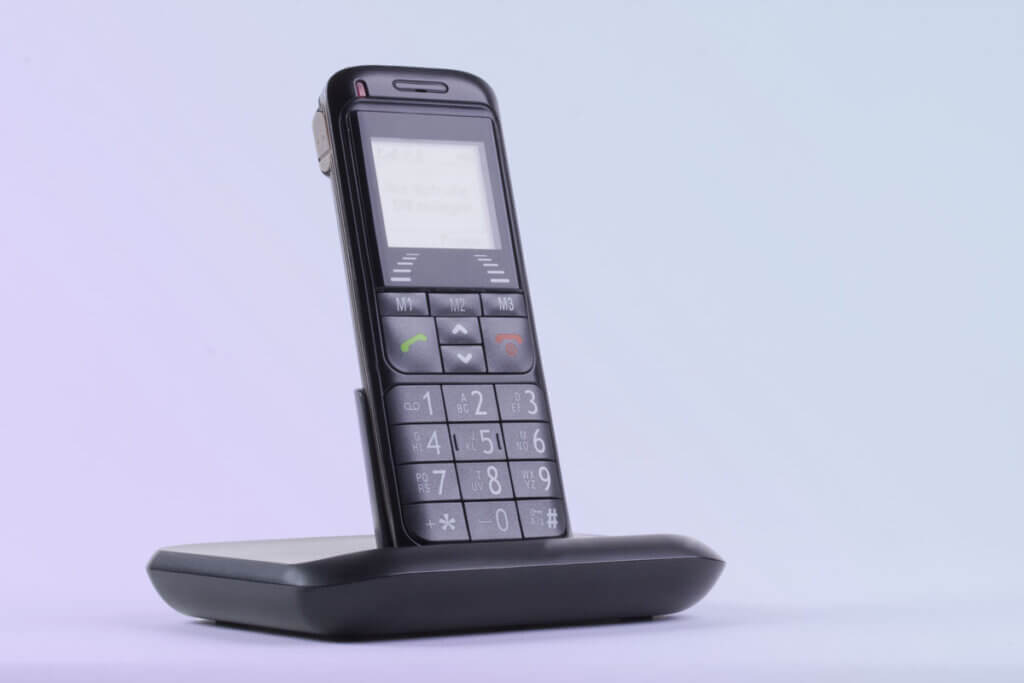
These wireless telephones are also practical for many smaller households, as you can answer and end the call anywhere. Many models already have an integrated answering machine ex works, so that the purchase of an additional device is no longer necessary.
The range of cordless telephones is about 50 metres indoors. If you are outdoors, for example in the garden, the range can be as much as 300 metres. These standard values can deviate considerably due to structural conditions and other sources of interference. To extend the range and amplify the signal, there are so-called DECT repeaters.
What does the abbreviation DECT mean for cordless telephones?
DECT is the technology that cordless phones use for voice transmission. The abbreviation stands for Digital Enhanced Cordless Telecommunications. There are only a few cordless phones that do not use this international DECT standard. One exception is telephones based on WLAN networks, which currently play hardly any role in private households. As with smartphones, radiation exposure is an issue with cordless phones. This is indicated by a SAR value in the technical data. The lower the value, the lower the exposure. Meanwhile, many devices have an eco mode in which the cordless phone emits less radiation. If this mode is not available, the user can only reduce the radiation by placing the handset in the base station. However, using the eco mode can reduce the radio range.
VoIP telephones
The abbreviation stands for “Voice over Internet Protocol”. VoIP telephones are not connected to the TAE socket, an ISDN box or a splitter, but directly to the DSL router or a VoIP-capable cable modem. Accordingly, the transmission of the call takes place entirely on the internet. These devices are often called SIP telephones. The name comes from Session Initiation Protocol.
Logically, the special IP telephones have a different technology than analogue terminals to ensure internet data transmission. They offer many advantages, especially in larger companies, because they make it easier to control telephone systems, telephone book entries, call forwarding and other organisational and administrative tasks.
The prerequisite for operation is, of course, that the telephone provider also provides the VoIP technology. Externally, IP telephones are basically indistinguishable from analogue or ISDN telephones. Well-equipped models have functions such as hold, call waiting, forwarding, conference calls, phone books or the busy lamp field (BLF), which is particularly popular in companies with many connections.
Analogue telephones
If the provider offers a VoIP connection, it is not absolutely necessary to purchase a special IP telephone. Users for whom a conventional analogue telephone is sufficient can simply continue to use it. In many cases, however, users will then need a telephone adapter. Some network routers already have these integrated. In these cases, the connection from the analogue telephone to the router can simply be made via a normal cable with an RJ45 connection. However, the range of functions is then limited compared to IP telephones. In case of doubt, the network provider or the manufacturer of the router will inform you about which telephones are compatible.
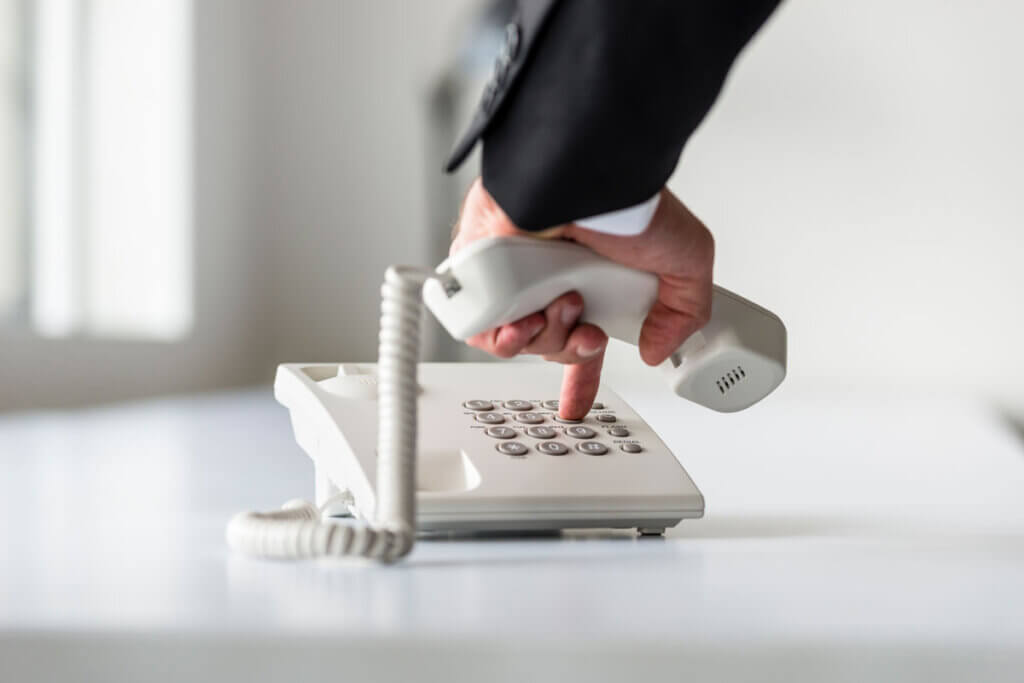
Analogue telephones do not offer such a wide range of functions as ISDN or VoIP devices. However, they are often much cheaper. Although the market offers a smaller selection of analogue phones, they are the first choice for those who want uncomplicated operation and do not attach great importance to technical features. Design freaks can also consider analogue telephones, for example, in retro style with a dial or with the handset in the look of a sports car or limousine.
ISDN telephones
Integrated Service Digital Network was long considered the international standard in digital telephony. Thanks to higher speeds and better voice quality, this type of connection has largely replaced analogue telephone technology. With ISDN it is possible to manage several numbers, including a fax connection, at the same time. However, in connection with the triumph of IP telephony, the network operators have agreed on a gradual phase-out of ISDN technology, which, as things stand, will take place in 2022 at the latest. But VoIP connections can also be used with ISDN telephones.
Purchase criteria
The different models of landline telephones have various features which, depending on the user, carry different weight in the purchase decision. There are models without a base station and those that come with one. The correct transmission standard is important so that a telephone can integrate into an existing cordless system or register with a base station or router. This is important, for example, for importing telephone contacts. Practically every manufacturer also offers at least one model that is tailored to the needs of senior citizens. These models often have a large, easy-to-read display, large buttons and the option of increasing the call volume.
Router
A base station is usually used with DECT telephones. It mediates between the handsets and the mains connection. For devices without an included base station for the mains connection, the buyer absolutely needs an internet router with DECT function. Since the introduction of the GAP standard, it is guaranteed that the devices no longer necessarily have to come from one manufacturer to be able to communicate with each other. It is therefore possible to use DECT telephones from a wide range of manufacturers with, for example, one of the widely used FRITZ!Box routers from the manufacturer AVM.
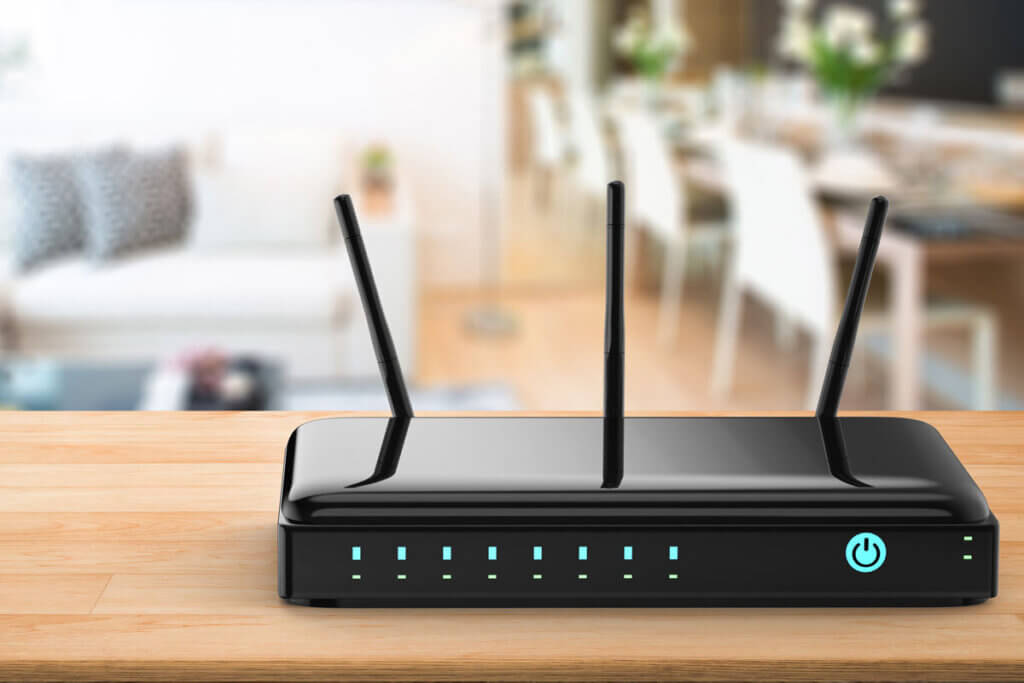
The separate DECT base station is then only necessary for charging the cordless phones. The router can include additional functions such as a call number memory and answering machine.
Transmission standards
The CAT-iq transmission standard goes even further than the GAP standard. The abbreviation stands for “Cordless Advanced Technology – internet quality”. Translated, this means cordless advanced technology – internet quality. Here, the conventional DECT telephone standard is extended by the internet telephony function VoIP and other internet-based services, such as public telephone books, RSS feeds and audio streaming. The standard guarantees a higher sound quality than conventional cordless phones and operates on its own frequency band. The radio transmission is therefore free from interfering influences.
Display
The display is an important element of every cordless telephone. It displays call numbers for checking when dialling, the numbers or, in the case of stored contacts, the name of the calls. It is also possible to make settings in the telephone menu via the display. While the displays of the first models were mostly monochrome, these simple designs are now only found on inexpensive models.
Voice quality
With current DECT technology, the latency, i.e. the time it takes for the signal to travel from the cordless telephone to the base station, is only about 10 milliseconds. So in practice it is not noticeable. As far as voice quality is concerned, there are hardly any models nowadays that are deficient in this respect. There are already inexpensive cordless phones that have the HD Voice function. This enables voice transmission in particularly high quality. However, this only works if the provider supports this technology and the receiver uses the same network as the caller.

Ringtones
Functions that users are more familiar with from smartphones are increasingly finding their way into the area of fixed-line telephony: in addition to a large selection of ringtones, owners of some modern fixed-line telephones have the option of specifying music tracks in MP3 format as ringtones by means of the router. Only the size of the device memory can be a limiting factor in the amount of music tracks. Enjoy your current favourite hit the next time you receive an incoming call.
Volume
DECT phones come with a preset volume for the ringtone, which users usually do not need to change. Special telephones for senior citizens or the hard of hearing offer more setting options here. Users can also adjust the volume of the handset according to their preferences. If the cordless phone has an audio output, a headset can be connected. Some devices also support connection via Bluetooth.
Range
The average range of DECT phones is about 50 metres indoors and 300 metres outdoors. Indoors, it depends a lot on the building materials used and the thickness of the walls. If you feel that the range is not sufficient, a DECT repeater, which is available from almost all well-known telephone manufacturers, is a good choice.

Phone book
The number of entries in the internal phone book of the cordless telephone depends on the device memory and varies approximately between 100 and 500 phone numbers. If the handset and router have a compatible CAT-iq standard, users can also access the contacts stored there. It is particularly practical if the user can thus access the telephone numbers from the contacts of his or her e-mail programme. It is also possible to assign different numbers to a contact, such as a landline, a mobile phone and an office number. Ideally, the devices offer the option of choosing between entries from the internal phone book (phone memory) and the external phone book (router) when searching for contacts.
Battery life
Since the manufacturers assume that the user of a DECT telephone usually charges the device overnight at the base station, less emphasis is placed on particularly powerful batteries. Nevertheless, when fully charged, a call duration of at least ten hours is usually possible. The standby time indicates how long the battery lasts when no calls are being made. Common values here range from 200 hours upwards. Special devices for senior citizens usually offer 300 hours or even more.
Headset connection
For users who like to have their hands free when making calls, some models have a headset connection in the form of a 2.5 millimetre jack. Phones such as the Gigaset S850 also offer the option of connecting a headset via Bluetooth.
Number of handsets
One of the advantages of cordless telephones is the possibility of operating several handsets with only one base station. These do not necessarily all have to come from the same manufacturer. It is absolutely sufficient if they support the GAP standard. This solution is not only practical in a large house: when a call comes in, it is then possible to accept the call from any telephone in the house – a great advantage especially in multi-storey flats.
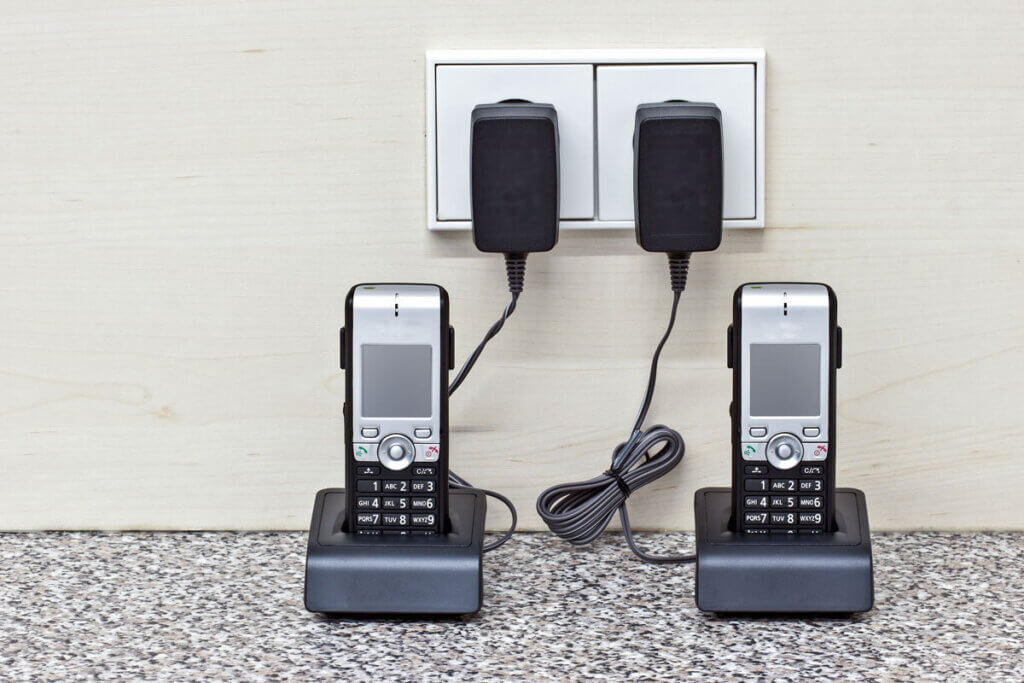
Internal communication between individual handsets can also save longer walking distances. Fixed-line telephone sets with up to eight devices are available on the market. The additional handsets then usually do not have their own base but their own charging cradles.
Operation
The more functions a device has, the more difficult it is for manufacturers to offer buyers a clear and easy-to-use menu. In many tests, the phones from AVM and Siemens Gigaset perform particularly well here. The quality of the keys is also important for operation. They should be large enough and not too recessed into the handset’s housing.
What special extras are there in cordless phones?
Telephone models with a colour display make operation easier and also make the entire device more visually attractive. It is also possible to add photos to phone book entries so that when the person calls, their picture appears on the phone. DECT telephones with touchscreens are very similar to smartphones in terms of operation. In general, design does not play as big a role with landline phones as it does with mobile phones. Only a few models with a retro design are a bit out of the ordinary. Hearing aid-compatible cordless phones score with a higher volume of the ring tone as well as the handset. Manufacturers often combine this option with other features that are particularly useful for senior citizens, such as especially large and easy-to-grip keys and a particularly easy-to-read display. If a baby monitor function is available, parents can place the handset in the children’s room and hear the sounds at the base station in the living room.
Image 1: © fizkes / stock.adobe.com | Image 2: © MATTHIAS BUEHNER / stock.adobe.com | Image 3: © Gajus / stock.adobe.com | Image 4: © phonlamaiphoto / stock.adobe.com | Image 5: © goodluz / stock.adobe.com | Image 6: © jd-photodesign / stock.adobe.com | Image 7: © MATTHIAS BUEHNER / stock.adobe.com

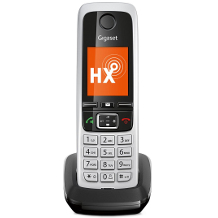
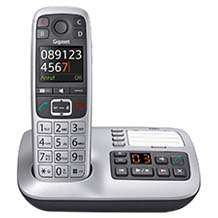
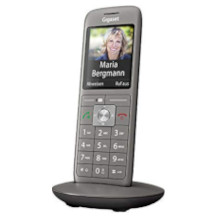
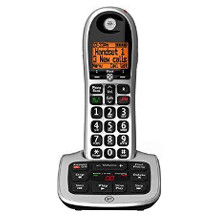









 7,039 reviews
7,039 reviews






